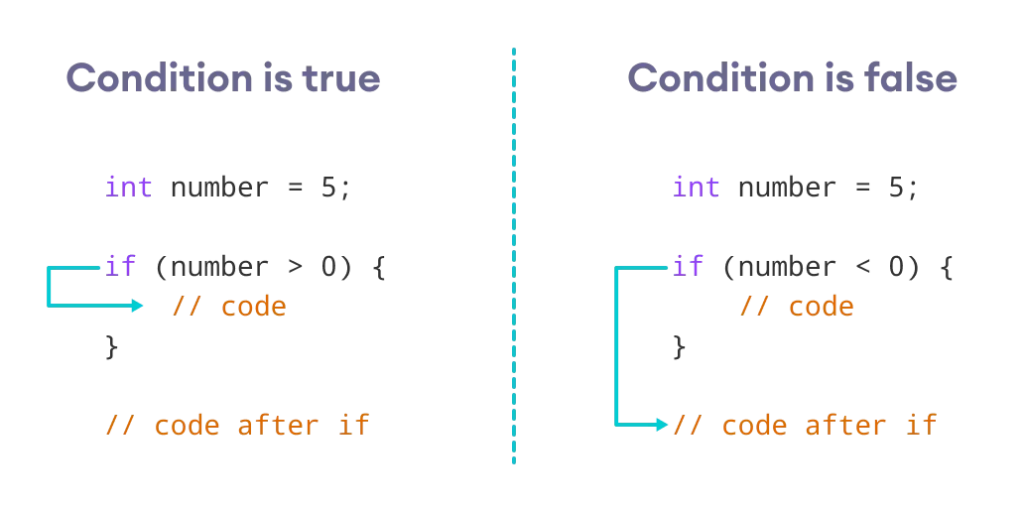Understanding the if Statement in C++
Understanding the if Statement in C++In the world of programming, decision-making is a fundamental concept that allows developers to design dynamic, responsive software. One of the most average ways to implement decision-making in C++ is through the use of the if statement. This control form enables a program to do a block of code only if a definite condition is met. Let’s learn the details of in what way or manner the if report works in C++ and analyze its variations.
Basic Structure of an if Statement in C++
At its core, the if statement in C++ checks a condition—an expression that evaluates to either true or false. If the condition is true, the rule block inside the if statement is performed. If the condition is false, the code block is avoided, and the program continues accompanying the next statement.

The primitive syntax of an if Statement in C++ is as follows:
if (condition) {
// code expected executed if the condition is true
}
Here, condition is some expression that returns a Boolean worth. If the condition is satisfied, the rule within the braces {} is performed.
Example: A Simple if Statement
Consider a simple model where we check if a changing is greater than the value:
include
using namespace std;
int main() {
int x = 10;
if (x > 5) {
cout << “x is greater than 5” << endl;
}
return 0;
}
In this instance, the condition x > 5 is true, so the program outputs, “x is greater than 5.” If the value of x were less than or equal to 5, the idea would not be displayed.
Enhancing Decision-Making with else
The if assertion maybe extended accompanying an else section, which determines an alternative block of code to kill when the condition is false. This admits you to handle two possible consequences:
if (condition) {
// rule expected executed if the condition is true
} else {
// rule to be performed if the condition is false
}
Example: Using if-different Statements
Here’s an example that checks either a number is certain or negative:
include
using namespace std;
int main() {
int number = -3;
if (number > 0) {
cout << “The number is positive” << endl;
} else {
cout << “The number is negative” << endl;
}
return 0;
}
In this case, because number is -3, the condition number > 0 is false, so the program executes the else block and outputs, “The number is negative.”
Multiple Conditions accompanying else if
In situations where you need to check diversified conditions, you can use the else if construct. This allows you to test additional conditions if the initial if condition is false.
if (condition1) {
// code to be executed if condition1 is true
} else if (condition2) {
// code to be executed if condition2 is true
} else {
// code to be executed if all conditions are false
}
Example: Grading System Using else if
Let’s forge a simple grading system that assigns a letter grade based on a student’s score:
include
using namespace std;
int main() {
int score = 85;
if (score >= 90) {
cout << “Grade: A” << endl; } else if (score >= 80) {
cout << “Grade: B” << endl; } else if (score >= 70) {
cout << “Grade: C” << endl; } else if (score >= 60) {
cout << “Grade: D” << endl;
} else {
cout << “Grade: F” << endl;
}
return 0;
}
In this model, the program checks the score against multiple thresholds and assigns the appropriate grade. If the score is 85, the productivity will be “Grade: B.”
Nested if Statements
Sometimes, you may need to act further checks inside an if or else block. This is place nested if statements come into play. A nested if statement is completely an if statement inside another if or else block.
if (condition1) {
if (condition2) {
// law to be executed if two together condition1 and condition2 are true
}
}
Example: Nested if Statement
Here’s an example where we check if a number is both positive and even:
include
using namespace std;
int main() {
int number = 4;
if (number > 0) {
if (number % 2 == 0) {
cout << “The number is positive and even” << endl;
} else {
cout << “The number is positive but odd” << endl;
}
} else {
cout << “The number is negative” << endl;
}
return 0;
}
In this case, the program first checks if the number is positive. If it is, the program then checks if it is even or odd.
Conclusion
The if statement is a powerful form in C++ programming, permissive developers to create responsive, bright software. By understanding and handling the if, different, and else if builds, you can guide the flow of your programs based on distinguishing conditions, making your rule more versatile and healthy. Whether you’re working on natural scripts or complex uses, mastering the if report is essential for some C++ developer.



